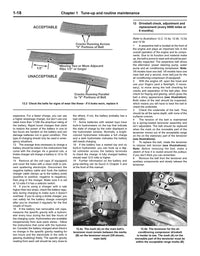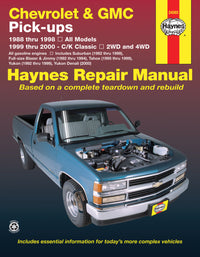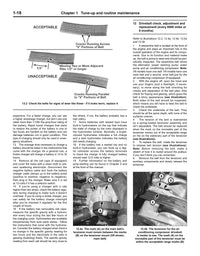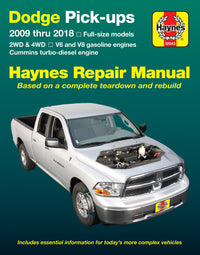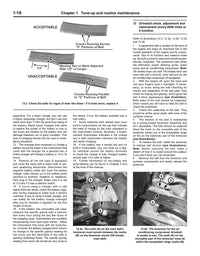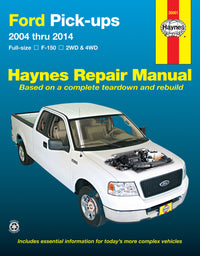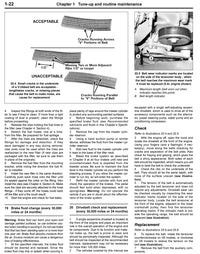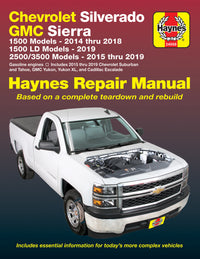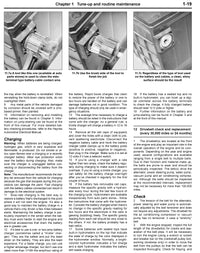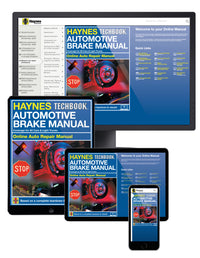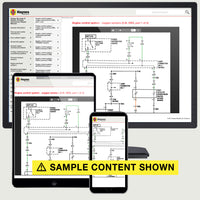The Premium Pick-up - power, comfort and safety
The GMC Sierra is General Motors’ answer to the eternal question: “What if a pickup truck could also be a luxury lounge, a workhorse, and a tech showcase—all at once?” Available in various trims from “basic-but-capable” to “plush enough to shame a German sedan,” the Sierra is a full-size pickup that does everything in a big way.
Unsurprisingly, a pick-up truck that can be optioned for luxury without giving up capability, that integrates bed, towing, and camera tech in ways that save time and reduce mistakes, and that offers credible factory off-road variants, the GMC Sierra earns its “Professional Grade” tagline.
Although it shares bones with the Chevrolet Silverado, the GMC Sierra positions itself as the more premium, feature‑rich twin—think Denali interiors, MultiPro tailgate tricks, and ProGrade trailering tech—without giving up traditional truck strengths like frame robustness, engine variety, and stout tow numbers. That blend attracts owners willing to maintain capability and comfort in their own garages.
The Sierra lineage reaches back to the late 1980s GMT400 trucks and has evolved through multiple platforms, each layering more electronics, emissions controls, and towing aids. Understanding those platform pivots helps you predict maintenance pain points—before they become wallet‑eaters.
Why the GMC Sierra Is So DIY friendly?
From fleets to overland builds, the Sierra’s mix of shared GM parts, robust body‑on‑frame construction, factory upfitter support, modern diagnostics, and a massive owner aftermarket make it one of the most approachable full‑size pickups for driveway and pro‑sumer DIYers alike.
Here’s what sets it apart:
- Shared GM Parts Pool: Common platforms with Silverado mean plentiful, affordable replacement parts and upgrades across model years.
- Body‑on‑Frame Serviceability: Bolt‑on beds, front clips, suspension modules, and driveline components are accessible with hand tools—ideal for home garages.
- Upfitter‑Friendly Wiring & Power: GM publishes plow/camper/trailer upfitter data; factory connectors ease safe accessory installs.
- Smart Maintenance Aids: Oil Life Monitor & widespread OBD‑II scan tool support let you base service on actual use, to guide your DIY work.
- Integrated Trailering & MultiPro Tailgate Utility: Built‑in camera views, light tests, and the convertible MultiPro tailgate create a rolling workbench for maintenance days.
- Active Owner Communities: Huge online knowledge base—forums, social groups, communities —so you rarely tackle a job alone with your Haynes or Chilton GMC Sierra Manual
- We have a range of GMC Sierra manuals for you.
In the case of the GMC Sierra usage typically beats mileage - real‑world work is the single biggest predictor of repair needs. Heavy towing, commercial plowing, dusty ranch roads, or short‑trip suburban idling each load different systems—fluids, brakes, steering, suspension, electrical, emissions—at different rates. Recognize your usage pattern and move to the most conservative service schedule sooner than you think. Then use the correct Haynes GMC Sierra Repair Manual (print or online) to perform frequent inspections, fluid changes, and common fixes yourself.
If any severe‑service conditions are routine for you, shorten service intervals (often by ~50%) and add targeted inspections.
Staying proactive helps you dodge generation‑specific headaches: GMT800 brake line corrosion and transfer‑case pump rub; GMT900 AFM‑related lifter/oil issues; K2XX direct‑injection carbon and 8‑speed service quirks; T1XX DFM/10‑speed care, 3.0L Duramax maintenance, MultiPro tailgate adjustment, and AT4X off‑road component checks.
Generation 1: GMT800 (1999–2006 & 2007 Classic)
The modern Sierra nameplate broke out here. These trucks—often spec’d for fleets, farms, and municipal snow duty—racked up heavy miles and saw harsh environments.
How Typical Usage Drives Wear
-
Salt & De‑icing Chemicals: Northern operations can lead to widespread steel brake line rot and underbody corrosion. Once lines fail, you lose braking when you need it most (plow season, towing downhill).
-
Snow Plows & Front Axle Load: Hanging a plow head adds hundreds of pounds out front; steering components, ball joints, torsion bars, and front diff seals will see accelerated wear. Frequent angle changes stress steering shaft joints.
-
Towing/Hauling Work Loads: Contractors pulling equipment trailers near max Gross Combination Weight Rating (GCWR); heat cycles shorten ATF life in 4L60/4L80/Allison units and tax engine cooling, especially when radiator fins are salt‑clogged.
-
Transfer‑Case Pump Rub: A known design quirk lets the internal pump wear through the magnesium case, creating a pinhole leak that silently drains fluid— you don't want this to go undetected.
Key Trouble Spots to Watch
- Brake Line Corrosion: Inspect along frame rails & ABS module; replace with coated or stainless lines.
- Transfer Case Leak Check: Look for oil mist at rear case half; install aftermarket anti‑pump‑rub plate or updated case.
- Front Suspension/Steering: Grease zerks often; inspect idler/pitman arms, upper control arm bushings, and steering intermediate shaft play.
- Grounds & Connectors: Salt creep into frame‑mounted grounds causes electrical gremlins (lights, plow harness, trailer wiring).
Generation 2: GMT900 (2007–2013)
GM refined the Sierra with better interiors, improved frames, and new powertrains—including Active Fuel Management (AFM) on many 5.3L/6.0L engines. Usage diversified: personal daily drivers that still towed campers, boats, and enclosed work trailers.
How usage shifted with this generation:
-
Daily + Weekend Tow: More owners used Sierras as commuter trucks that doubled as tow rigs; heat cycling and infrequent but heavy loads can accelerate Automatic Transmission Fluid (ATF) oxidation in 6L80/6L90 units.
-
GM's Active Fuel Management (AFM) Cylinder Deactivation: Frequent short trips and low‑load cruising (where AFM is active) can promote lifter collapse and oil consumption complaints if maintenance delays occur.
-
Ongoing Salt Exposure: Despite improvements, snow‑belt brake & fuel line corrosion persist—especially on trucks that retired from fleet duty and lost regular washes.
-
Growing Electrical Content: Trailer brake controllers, stability systems, and body modules add connectors vulnerable to corrosion in plow or marine tow service.
Usage‑Linked DIY Issues
- AFM Lifter Failure / Oil Use: Low oil or extended change intervals can worsen the collapse risk; misfires, ticking, or cylinder deactivation faults follow.
- 6‑Speed Heat & Fluid Degrade: Towing in overdrive (OD) or frequent stop‑start urban haul breaks down fluid; early fluid exchanges help shift quality.
- Rusty Brake Lines (Carryover): Many GMT900s are now old enough that lines are brittle—planning a full replacement could be wise.
- Evap & Emissions Harness Damage: Off‑road or field work can snag lines; dust clogs purge/vent.
Generation 3: K2XX (2014–2018; 2019 1500 LD) & Early HD Snow‑Plow Notes
The K2XX redesign brought stiffer, lighter frames; improved aerodynamics; advanced infotainment; and direct‑injected (DI) EcoTec3 gas V6/V8 engines (still with cylinder deactivation) plus updated HD Duramax platforms. Many trucks now serve as family daily drivers that tow recreational trailers and support small businesses.
How Gen 3 Usage Shifted
- Higher Tow & Payload Utilization: fluids can run hotter in 6‑ & 8‑spd autos and axle housings when hauling campers and boats.
- Direct Injection and Short Trips: Direct-Injected engines can accumulate intake valve carbon—worse with lots of idling, short commutes, or dusty conditions.
- Snow‑Plow Electrical Loads: Upfitted plow pumps create voltage spikes ("load dump") that can momentarily blank instrument or HVAC displays if wiring isn’t protected.
-
Advanced Chassis Electronics: Lane/park sensors and trailer aids add wiring at bumpers prone to salt & impact damage.
Usage‑Sensitive Trouble Spots for DIYers
- Direct-Injection Intake Valve Carbon: Causes cold misfires, power loss; periodic induction cleaning or walnut blast may be needed.
- 8‑Speed ATF Shear/Shudder: Heat + fluid breakdown under load; updated fluids improve.
- Snow‑Plow Load Dump Events: Protect electronics; ensure proper harnessing & isolation modules.
- Corrosion Still a Factor: Improved coatings help but salt can still attack lines & crossmembers.
Generation 4: T1XX (2019–Present) Sierra 1500, AT4/AT4X & Modern HD
Today’s Sierra line-up spans efficient turbo four‑cylinders, Dynamic Fuel Management (DFM) V8s, a smooth 3.0L inline‑six Duramax diesel, and heavy‑duty monsters rated to tow up to the mid‑30,000‑lb range when properly configured. Off‑road trims (AT4, AT4X, AEV editions) add Multimatic DSSV dampers, skid‑plate armor, and locking differentials. The MultiPro tailgate and a forest of cameras/sensors increase capability—and maintenance touchpoints.
Gen 4 Usage Trends
- Torque‑Dense Towing & Fifth‑Wheel Loads: HD Sierras see sustained high Gross Combined Weight Rating usage (GCWR); heat management in transmissions, axles, and cooling stacks is critical.
- Mixed driving needs and Technology: Short urban trips alternate with long tow vacations; oil dilution (turbo 2.7), DFM lifter cycling (5.3/6.2), and regen cycles (3.0 Duramax) demand attentive fluid care.
- Off‑Road AT4/AT4X: DSSV shocks, skid plates, lockers—awesome capability but need inspection after hard use; mud packing can spike temps.
- MultiPro Tailgate Use: Additional hinges, latches, and wiring susceptible to misalignment or damage when loading trailers or backing into obstacles.
DIY Items to watch
- DFM / Lifter Health: Maintain oil quality; avoid extended low‑load idle when possible; software updates matter.
- 10‑Speed & Severe Tow: Shorten automatic transmission fuel (ATF) change service intervals; monitor temps with dash readouts or consider investing in a scan tool.
- 3.0L Duramax (LM2/LZ0) Maintenance: Timely fuel filter & oil changes; belt & coolant interval adherence; watch DEF sensors.
- AT4X DSSV Dampers: Inspect for leaks after each serious trail; re‑torque suspension hardware; clean mud from cooling & skid plates.
- MultiPro Tailgate Alignment: Adjust latches/strikers if binding; inspect harness each service.
| Usage Pattern | What Gets Hit Hard | Generation Hot Spots (G1 = Gen 1 etc) | Example DIY Tasks |
| Heavy Tow / Fifth‑Wheel (>50% rated GCWR regularly or >10 heavy trips/yr) | ATF & coolers heat‑soak; axle fluids shear; brake wear; cooling stack clogs; trailer wiring strain. Treat all fluids as severe; clean cooling fins after trips. | G1: Pump‑rub TC leaks starve 4x4 case; G2: 6L80/6L90 heat; G3: 8‑spd shudder if fluid shears; G4: 10‑spd temp mgmt + DFM oil quality. | Trans drain/fill & filter; cooler line flush; diff fluid service; brake pad/rotor measurement; trailer brake controller test; cooling stack cleanout. |
| Snow Plow / Commercial Upfit (seasonal municipal/contractor) | Massive front‑axle load; steering & suspension wear; charging system stress; harness chafe; extreme salt corrosion. Baseline pre‑season; mid‑season torque/grease; deep post‑season inspect. | G1: Front end wear + brake line rot; G2: salt carryover; G3: plow load‑dump electronics; G4: smart charging load spikes. | Front end checks (idler/pitman arm, joints); grease zerks; battery/alternator load test; plow harness routing & protection; brake line inspect/replace; corrosion treatment. |
| Ranch / Dusty Off‑Road (gravel, caliche, desert, farm) | Air filters plug fast; shocks/bushings pound; diff/TC breathers ingest dust; cooling stack packs; evap lines damaged. Inspect after each major trip. | G1: Low breathers; G2: AFM heat if cooling restricted; G3: DI carbon worsens dusty short‑trip use; G4: AT4/AT4X DSSV seals & sensors. | Air filter R&R; breather clean/extend; shock leak & torque check; skid plate remove/clean; evap line inspect |
| Deep Mud / Water Fording (axle tubes submerged) | Water intrusion in diffs/TC/hubs; U‑joint washout; electrical connector contamination. Service immediately after immersion. | All gens vulnerable; G1/G2: vent routing low; G3/G4: more electronics at bumpers & frame rails. | Diff & TC fluid change; hub/bearing inspect or repack; U‑joint lube; dielectric grease connectors; ABS sensor clean |
| Short‑Trip / Idle‑Heavy City (<5 mi trips, long idle) | Fuel dilution & moisture in oil; weak batteries; AFM/DFM lifter stress; exhaust condensation. Shorten oil changes; test batteries yearly. | G2: AFM lifter collapse w/ dirty oil; G3: DI carbon + AFM; G4: 2.7 Turbo oil dilution; DFM cycling. | Oil & filter change; PCV system check; battery/alt load test; exhaust moisture drain/check; scan for misfires. |
| Salt‑Belt Winters (regular brine exposure) | Brake & fuel line rot; frame scale; corroded grounds; module & harness failure. Wash underbody after storms; inspect lines each season. | G1: Severe brake line rot; G2: carryover lines; G3: improved coatings but still vulnerable; G4: complex electronics in splash zones. | Brake line replace/bleed; frame scale removal & coating; ground clean & dielectric grease; ABS module shield install. |
| High Mileage Fleet / Work (>25k mi/yr) | All fluids age fast; tires & brakes cycle frequently; alignment drift; HVAC loads from idle. Run everything on severe schedule; stagger services. | Applies to all gens—mixed drivers accelerate wear. | Batch oil/filters; comprehensive 15k multiplatform inspection; tire rotation; brake measurement; fluid sampling for extended drains |
| Heavy Bed Payload / Slide‑In Camper (near RAWR routinely) | Rear springs/airbags squat; shocks overheat; brakes, tires, bearings stressed. Monitor ride height & pressures every trip. | G1: Leaf sag common; G2: 3/4‑ton upgrade interest; G3: Magneride conflicts w/ helpers; G4: load sensors/ADAS may need re‑cal. | Add overload/airbag; brake upgrade; tire load‑range upgrade; ride‑height measure & alignment |
How do I classify my use in the table above?
- Tow >5,000 lbs more than a few times a year? Use Heavy Tow row.
- Run a plow or spreader? Use Snow Plow row (even if only 3 months/yr—salt counts!).
- Live on a gravel road? You’re Ranch/Dusty even if you never tow.
- Mostly 3‑mile school runs? That’s Short‑Trip City .
- Midwest, Northeast, coastal? Add Salt‑Belt modifiers.
FAQ: GMC Sierra Usage, Fluids & Intervals
- Q: I plow snow every winter. How often should I inspect my front end? A: Do a pre‑season baseline (joints, bushings, steering shaft), mid‑season torque check, and a full post‑season rebuild inspection. Re‑grease zerks at every engine oil change.
- Q: My 5.3L AFM engine ticks at start-up—what now? A: Short trips and extended oil intervals are hard on General Motors Active Fuel Management (AFM) lifters. Change oil now, check pressure, scan for misfire counts, and inspect lifter collapse if symptoms persist.
- Q: When do I service the 10‑speed automatic in my late‑model Sierra? A: Under heavy tow or commercial use, treat 45k miles as a target; monitor fluid temp and color.
- Q: I have the 3.0L Duramax. Is the fuel filter really that important? A: Yes—dirty fuel or water in fuel shortens injector and fuel pump life and can trigger regen faults. Replace at the prescribed interval (or earlier depending on use) and drain water separator regularly.
- Q: My MultiPro tailgate binds after backing to trailers. DIY fix? A: Inspect hinges and strikers for misalignment; adjust latch bolts per Haynes sequence; verify wiring harness slack for the inner gate release.
DIY Wrench‑Turn Tips
- Log Real Usage: Track tow weight, plow hours, idle time; base intervals on reality, not hope.
- Baseline Used Trucks: Buying a used Sierra? Change all fluids, inspect brake lines, scan for codes, and document in a log.
- Group Jobs Seasonally: Combine underbody wash, brake inspection, and rustproofing before winter.
- Monitor Temps When Towing: Some owners of late-model Sierras suggest they display elevated trans temp—pull over if sustained > 230°F; change fluid early.
- Protect Electronics: Seal connectors (plow, trailer, sensors) with dielectric grease; re‑clip harnesses after off‑road trips.
- Torque Matters: Re‑torque wheel lugs nuts, suspension bolts, and plow mounts using Haynes spec tables after first 100 miles of heavy work
Final Thoughts
Trucks live the lives we give them. A Sierra that spends weekdays hauling drywall, weekends towing a fifth‑wheel, and the odd fall plowing snow will outlast expectations—if you match maintenance to usage. With a Haynes or Chilton manual at your elbow, you’ll fix it right the first time, know which fluids matter, and keep the story going another 200,000 miles.
"The GMC Sierra embodies the best traits of modern pick-up trucks and we have been so impressed, we create wide manual coverage of these models" Haynes Editorial Team















